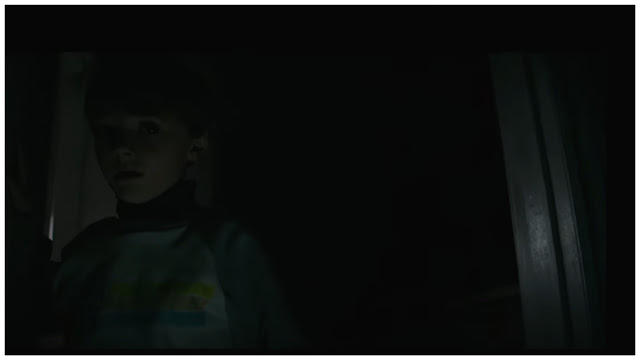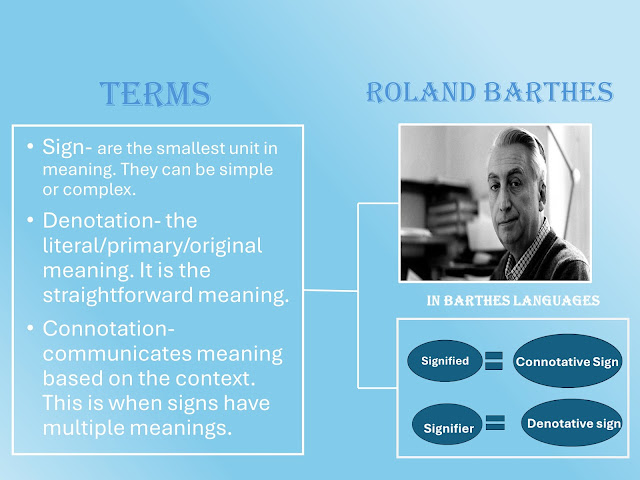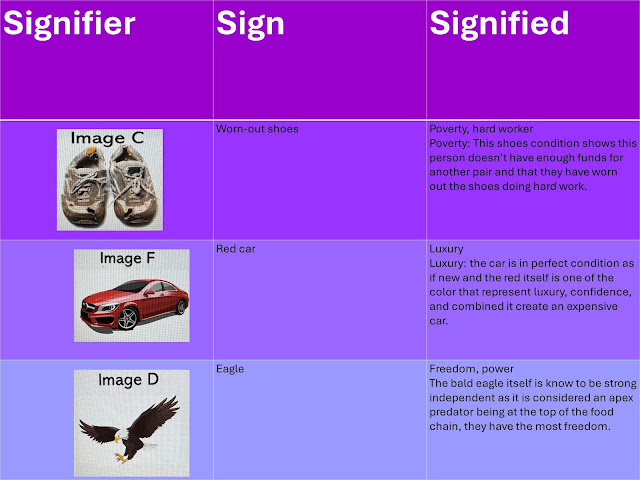|
Understanding and explaining, how media products construct and communicate
meanings, through close analysis of the interaction of media language and
audience responses.
|
|
Objective:
To introduce students to the Component 1 critical
reflection questions, closed analysis of a media product created by Media Studies
candidates and to self-reflect on their media product.
Other goals:
· It provides an insight into how the technical
elements and media concepts are used to create meaning with the purpose of
targeting an audience.
· Students will also develop and analyze how they
used their practical skills using software and hardware technology to
complete their media products.
|
|
Instructions:
1.
Fill in
your responses using your own words. Please note I will be checking to see
if my students are using AI to answer these questions.
2.
Use the
9607 AICE Media Studies Syllabus and the Component 1 Blog PPT to assist you
in answering the questions.
3.
Once
you have completed the table, copy it into a new draft to create your
second blog post.
4.
The
title is listed above, and it should be placed under the Introduction
section of your blog site.
5.
Check on your post to make sure the table
is clearly visible and not cut off when published. If it is, please edit
and update the website.
6.
Check
blog post again in published mode to make sure everything has been updated.
7.
Copy
web address in the published mode and not in the draft mode and submit on
CANVAS by the end of class.
8.
Also
submit a PDF copy of this to Canvas for full credit.
|
|
1. What is the purpose of the Component 1 blog website
in reference to your syllabus is? (Read the syllabus.)
|
|
The purpose of my component 1 blog website is to create
a film opening, In the blog post I will be able to share my progress and show
the process of creating my media product. Which include recording any
activity that was done in class to help form my film opening. I will be
able to express my creativity throughout my own media creation while
document all my work for Cambridge and my teacher.
|
|
2. Who is the audience? (Read the syllabus.)
|
|
The target audiences are the Cambridge and Mrs. Vincent
|
|
Goal 1:
Student understands the purpose and audience of
their media product.
|
A
Sophisticated understanding
(10-9)
|
B
Thorough understanding
(8)
|
C
Clear understanding
(7)
|
D
Limited understanding
(6)
|
F
No credit
|
Grade
|
|
3. What is a student blog? (Google and refer to your
syllabus.)
|
It an online educational site where I can express myself through
digital media form. On a student blog, I’m able to show the progress and step
process of my work that lead to end result.
|
|
4. What of type of media form is a blog?
|
A Blog is a Digital media form.
|
|
5. What type of media product is a blog?
|
An educational website.
|
|
Goal 2: Demonstrate knowledge and understanding of media concepts
|
A
Sophisticated understanding
(5)
|
B
Thorough understanding
(4)
|
C
Clear understanding
(3)
|
D
Limited understanding
(2)
|
F
No credit
|
Grade
|
|
Four Conventions of a Blog
Website
How does your blog construct and communicate meanings through close
analysis of the interaction of media language and audience responses? (Think about the purpose and target audience.)
•
What is purpose of the blog and
how did you use media language (Design, arrangement and content)?
•
How does my blog engage my target audience? How do you want
your audience to respond to your blog.
|
|
1. Home Page
|
6. The importance of the homepage is to communicate and engage with
my audience. For instance, in my home page the grader will be able to see
how I express myself and some of my interest. With the help of my home page
tool, my audience will find it easier to navigate through my work.
7. The media language I used to engage my
audience are color, image and fronts.
|
|
2. Design: Design template design and
arrangement, colors, font (style, color and size), and background image.
|
8. The design template I used is
called Travel studio, I use that template because it very accessible and easy
to make adjustment to while staying organize. In addition, I like the idea
of traveling because it brings new opportunities, and express freedom.
9. The colors I chose are blue/cyan blue, purple and white because it helps match
the energy of background, while representing my personalities. Just like
how purple represent creativity and sensitivity, meanwhile blue represent
dedication, calm and infinite possibilities. Together they create a well
balance view.
10. By choosing lobster, time new roman, Hanuman and courier font, it
makes it easier for my audience to visualize the written word. Not only
that they are visible, but they help my blogs look creative and formal at
most.
11. The background image, I selected was influenced by my interest on
anime and adventures. The tv show animation of Pokémon was all about fun
adventure solving mysterious problem. Not only that but it was also about
building friendship. I find it relatable to use since I love making new
friend it always a fun opportunity plus it help us live with some reliable
and trust ones.
|
|
Goal 3: Ability to use technical skills effectively to
express and communicate ideas.
|
A
Sophisticated understanding
(10-9)
|
B
Thorough understanding
(8)
|
C
Clear understanding
(7)
|
D
Limited understanding
(6)
|
F
No credit
|
Grade
|
|
3. Posts: What will my component 1 blog posts be
about? (Read your syllabus and the component 1 PPT PDF details.)
|
12. My component 1 blog posts will be about all the process that led
to my film opening creation with my group. It is known that the video will
be at max 2 minutes. My blog post will record all the process and research that
was done. In addition, in my blog post I will be doing a self-creative critical
reflection.
|
|
4. What is your first blog post about and its
objective?
|
13. My first blog is about an introduction of myself to my audiences,
while making a prediction of what my future blog post will be about. The
main objective is to create a connection with my audience, while setting an
expectation to my reader for the purpose of projecting a clear idea, planning
production.
|
|
Goal 4: Ability to use appropriate media language to communicate
meaning to an intended audience
|
A
Sophisticated understanding
(10-9)
|
B
Thorough understanding
(8)
|
C
Clear understanding
(7)
|
D
Limited understanding
(6)
|
F
No credit
|
Grade
|
|
Distribution
|
|
•
What application was used
to distribute your Component 1 work?
|
14. The application I used to distribute my Component 1 content is blogger.com.
|
|
•
Other application I used to
complete this assignment.
|
15. The other application (s) are messenger, office365, canvas and
word.
|
|
•
List 3 reasons, why the
application was suitable for the media product?
|
16. Three reasons are Blogger help keep my work saved and safe, it also
helps me keep my blogs organize for Cambridge. At last, all together they
help me stay connected with my teammates and my teacher.
|
|
•
List two other new media
products that could you have used to distribute my component 1 content.
|
17. Two other new media products that I could have used to distribute
my component 1 content are audio-recordings and mobile apps
|
|
Goal 5: Ability of product to engage with audiences and to be
distributed as a real media text?
|
A
Sophisticated understanding
(5)
|
B
Thorough understanding
(4)
|
C
Clear understanding
(3)
|
D
Limited understanding
(2)
|
F
No credit
|
Grade
|
|
Technology
|
|
6. How did you integrate technologies – software, hardware and online
– in this project. What other software you used to create your first post?
What hardware did you use to create your first blog post?
*Software the programs and other operating
information used by a computer.
*Hardware the external and internal devices and
equipment that enable you to perform major functions such as input, output,
storage, communication, processing, and more. (computer, internet, phones,
etc.)
|
|
18. Other software I used in the completion of my first blog posts are
Microsoft edge, google.
19. The hardware I used to
complete my product are my cellphone and my laptop.
|
|
Goal 6: Ability to integrate technologies – software, hardware and
online – in this project?
|
A
Sophisticated understanding
(10-9)
|
B
Thorough understanding
(8)
|
C
Clear understanding
(7)
|
D
Limited understanding
(6)
|
F
No credit
|
Grade
|
|
Goal 6: Application of knowledge and understanding of key concepts to
a production.
|
A
Sophisticated understanding
(10-9)
|
B
Thorough understanding
(8)
|
C
Clear understanding
(7)
|
D
Limited understanding
(6)
|
F
No credit
|
Grade
|
|
Goal 7: Student completed the Personalization of their Component 1
Blog.
1.
Added a background image.
2.
Changed their font style, color
and size.
3.
Added 2 sections: Introduction
and Preliminary Exercises Tabs.
4.
Completed blog post 1 and 2 and
added them to their section.
|
A
Student completed 100% of the requirements for the
assignment. (10-9)
|
B
Student completed 80% of the requirements for the
assignment.
(8)
|
C
Student completed 75% of the requirements for the
assignment.
(7)
|
D
Student completed 60% of the requirements for the
assignment.
(6)
|
F
Under 60% no credit.
|
Grade
|
|
|
|
A
Sophisticated use of media language shows
insightful engagement with audience
(9-10)
|
B
Effective use of media language shows appropriate
engagement with audience
(8)
|
C
Clear use of media language shows some engagement
with audience
(7)
|
D
Limited use of media language shows general
engagement with audience
(6)
|
F
No credit
|
|
|
Goal 8: Completion of self-assessment.
|
A
Sophisticated understanding
(5)
|
B
Thorough understanding
(4)
|
C
Clear understanding
(3)
|
D
Limited understanding
(2)
|
F
No credit
|
Grade
|
|
Goal 9: Correct Submittal for Evaluation.
|
A
Sophisticated understanding and application of
submittal
(5)
|
B
Thorough understanding
and application of submittal (4)
|
C
Clear understanding and application of submittal
(3)
|
D
Limited understanding and application of submittal
(2)
|
F
No credit
|
Grade
|
|
Goal 10: On-time.
|
A
Ontime
(5)
|
|
|
|
|
Grade
|
|
Total
|
|
|
|
|
|
-------/100
|
|
|
|
|
|
|
|
|
|
|
|
|
|
|
|
|
|
|
|
|






